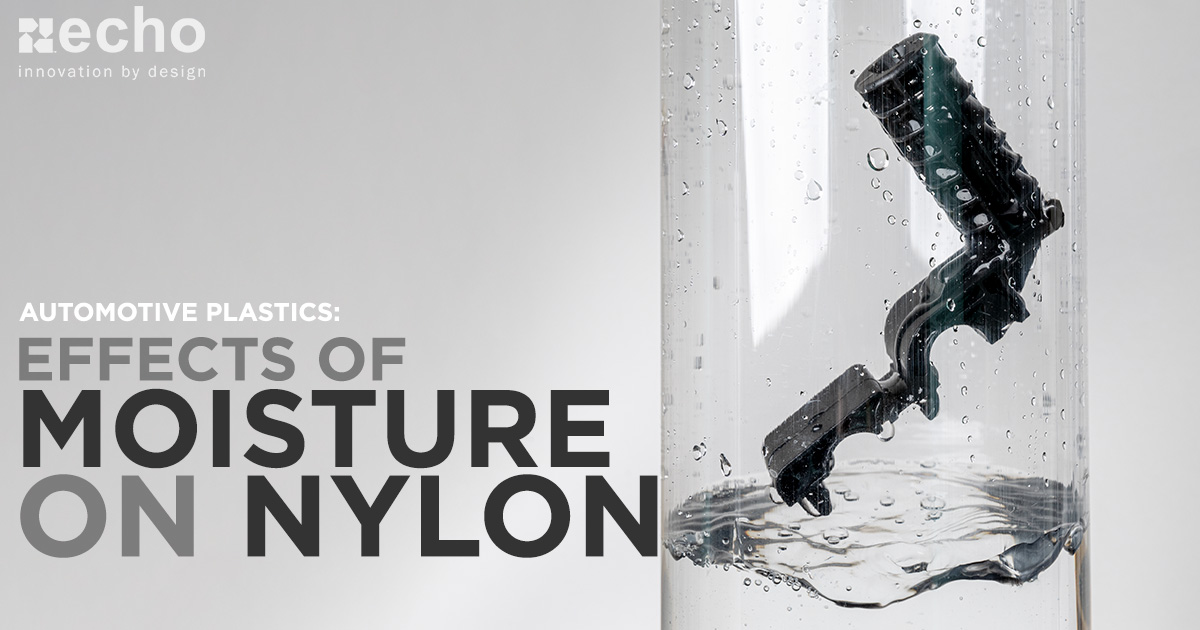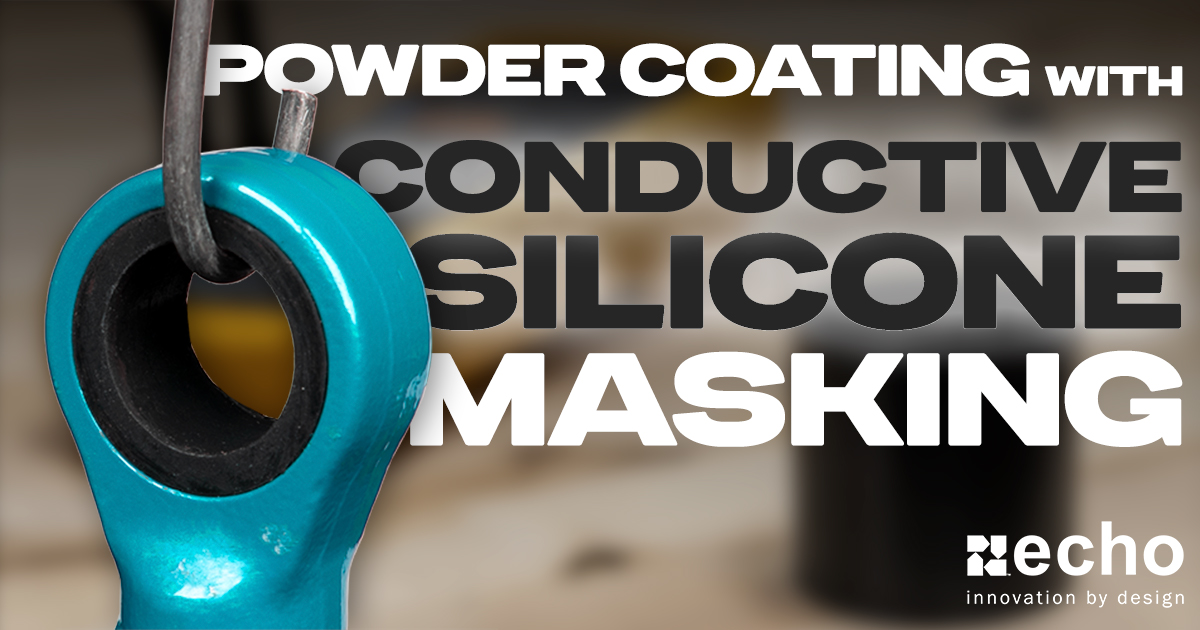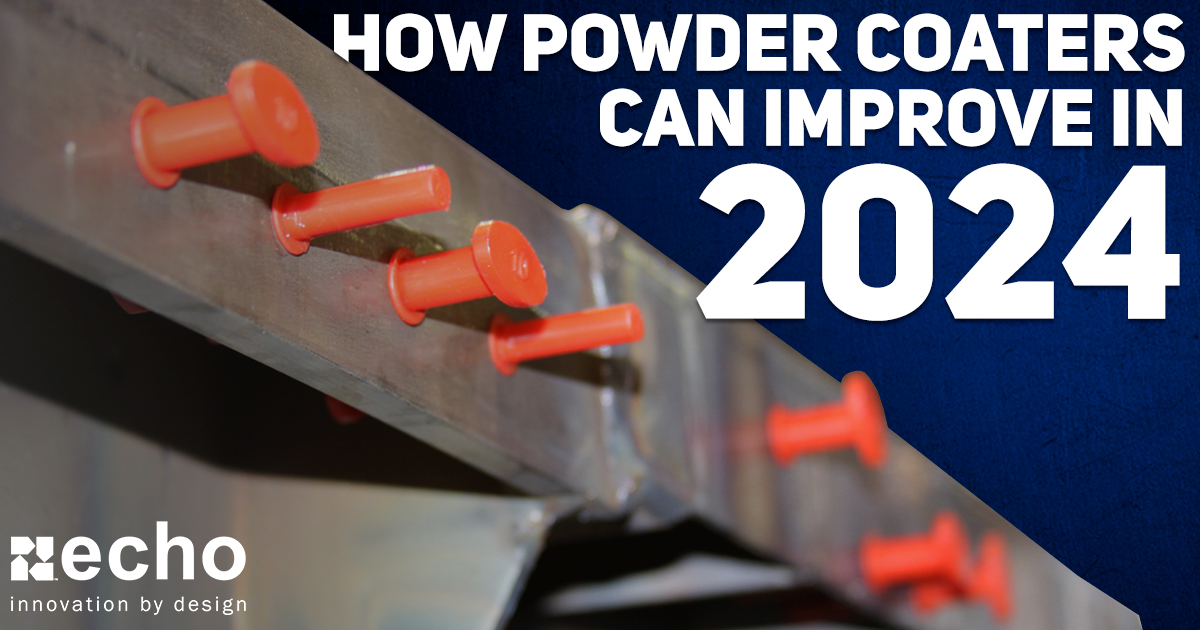Injection Molding Basics: Common Surface Defects
-
 By
Lee Lechner
By
Lee Lechner - Nov 5, 2021
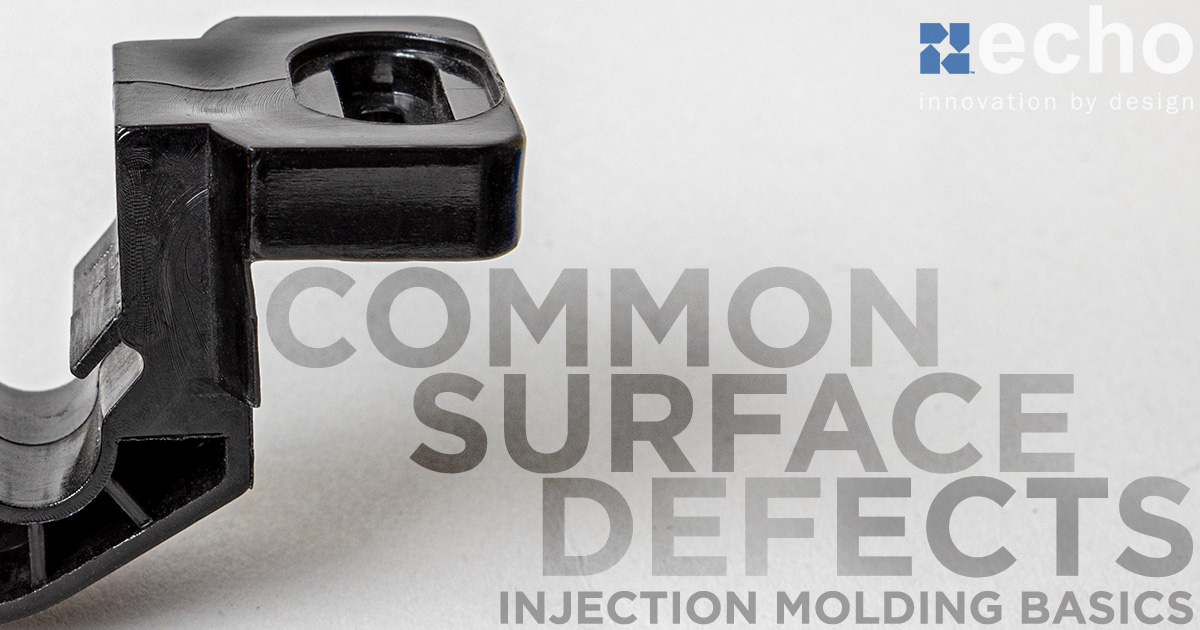
Injection Molding Surface Defects
Imagine buying a brand new electric vehicle that you're ready to show off to all your friends, but after you drive it home, you notice the center console is warped and it completely strips away your initial excitement. Fortunately, the automotive industry has some pretty intense quality standards, especially when it comes to Class-A surfaces, that help to prevent or at least significantly reduce these defects from making it past the assembly line.
Injection molding plastic components is a complex process that can come with some unforeseen issues. Throughout this post, we will go over common injection-molded surface defects and the possible sources that are causing them.
Warping
Warpage occurs with injection molded parts when there is uneven shrinkage during the cooling process, causing stress that results in bending and twisting.
Possible Sources of Warpage:
- Mold design, such as gate location resulting in uneven cooling
- Material selection
- Part Design, such as wall thickness variations or even the shape of the part
- Short cooling times
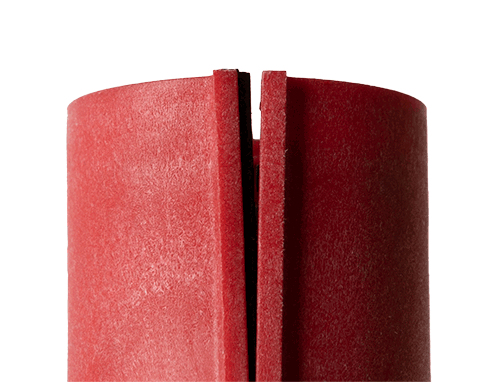

Ejector Pin Marks
Ejector pin marks are imprints caused when the ejector pins push the part out the mold and the mold will occasionally stick, resulting in the marks. These cosmetic defects are highly common on injection molded parts, which is why you'll almost always see them.
Possible Sources of Ejector Pin Marks:
- High injection pressure
- Insufficient use of mold release agent
- Ejector pins design and speed of which they eject the parts
- Improper part design
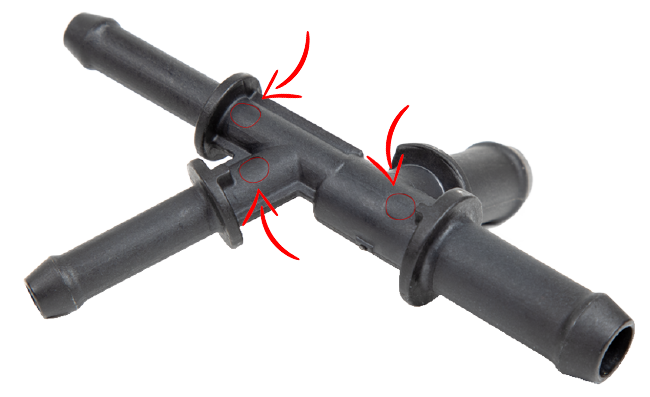

Flash
Flashing issues are one of the most common defects you'll run into with injection molding. It is caused when molten plastic escapes out of the mold cavity.
Possible Sources of Flash:
- Poorly designed mold, resulting in insufficient venting
- Worn down mold
- Excessive high-temp mold
- High injection pressure
- High-moisture absorption of the resin
In order to reduce/prevent flashing, you'll need to ensure there is proper venting to remove any trapped gasses, and you'll also want to ensure you're using the optimal melt temperature, injection speed, and mold temperature.
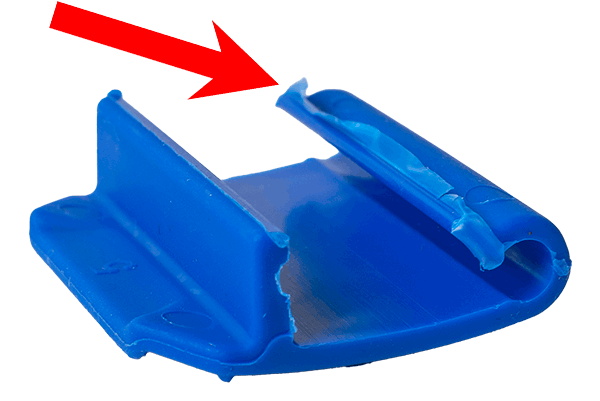

Sink Marks
Sink marks are the small depressions around the thicker areas of injection molded components that typically form when shrinkage occurs.
Possible Sources of Sink Marks:
- Wall thickness variations
- Insufficient gate and runner sizes
- Insufficient vents not allowing enough air to escape
- Gate location (Needs to be relocated to the thicker sections to pack before thinner sections freeze off)
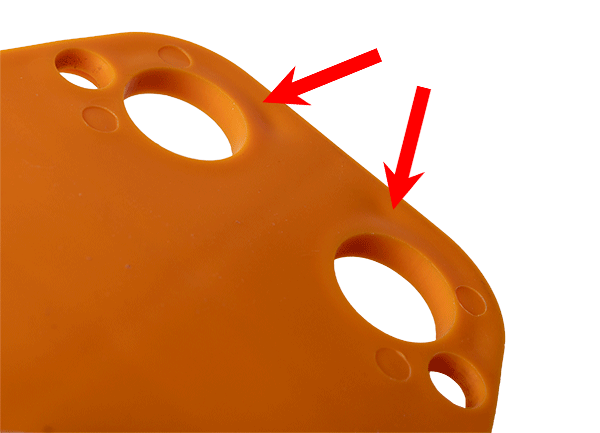

Knit / Weld Lines
While not always visible, weld lines (aka knit lines) are where two resin flows meet. This defect is caused when the polymer resin is injected into a mold and flows around a solid piece and forms when the resin collides back together without completely fusing back together.
The weld line can either be a minor cosmetic issue or potentially bad enough to negatively impact the part's strength.
Possible Sources of Weld/Knit Lines:
- Temperature from the injection molding machine, runners, and/or the mold itself in order to ensure the plastic resin flows properly
- Insufficient pressure resulting in the flow fronts not being merged back together with strong enough
- Mold design, especially location of gates and runners impacting the resin flow
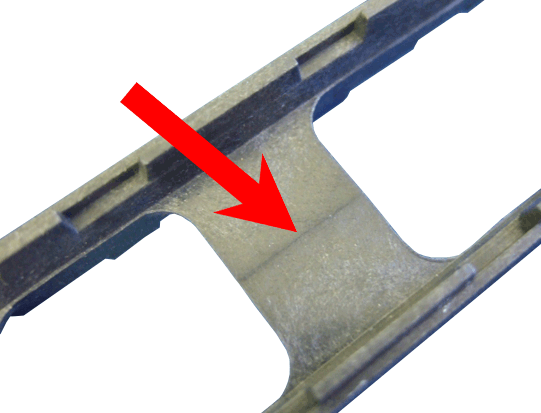

Flow Lines
Flow lines are going to typically show as off-color, wavy patterns on the narrow sections of molded parts, or as the ring-shaped near the entry point of the mold.
These defects are typically caused when molten plastic cools quickly and hot plastic flows past sections that have already cooled down.
Possible Sources of Flow Lines:
- Low injection pressure/speed
- Low mold temperature/material temperature
- Insufficient gate channel
- Gate location
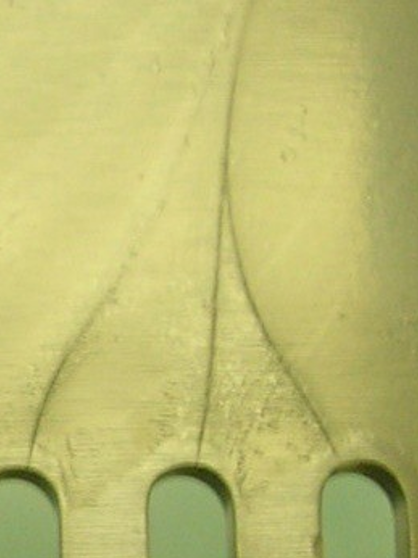

Jetting
Jetting is a defect where molten plastic ends up not sticking to the mold's surface as a result of the speed of the injection. This results in the plastic solidifying as wavy folds of the jet stream on the surface of the part.
Possible Sources of Jetting:
- Melt temperature is too low, resulting in a higher viscosity of the molten plastic
- Injection speed
- Gate size/design
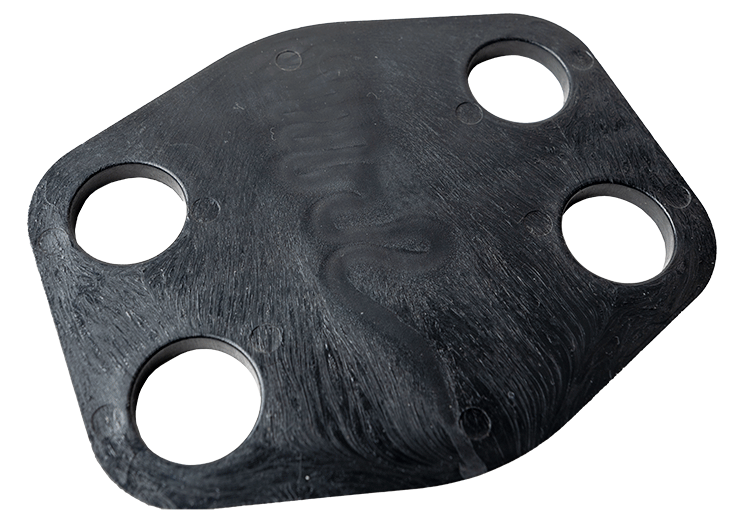

The biggest elements we'd recommend focusing on here is correcting your mold and melt temperatures, while also optimizing the injection speed by increasing the size of the gate. This will help to ensure that resistance is minimized when it flows through the mold.
Conclusion
Injection molding continues to be a complex manufacturing process that requires perfect harmony of part design, mold design, material selection, and the molding process itself. Unfortunately, getting it correct out the gate can be extremely difficult to accomplish on the first attempt, which is why it's important to partner with an experienced injection molder and tooling manufacturer that have seen all types of defects and know how to fix them.
If you are running into these surface defects and not sure why it's happening, most likely it's going to come down to one of the following:
- Temperature of the mold and/or resin
- Injection speed/pressure
- Part design
- Mold design
- Gate location and/or size
These are typically what you'll need to look at to correct the issue. If you're still not sure what's going on, contact us below. Echo Engineering is highly experienced in complex injection molding projects, ranging from complex underbody clips all the way to class-a surface products. Our in-house engineers are here to ensure you understand what it takes to manufacture the part you want.



